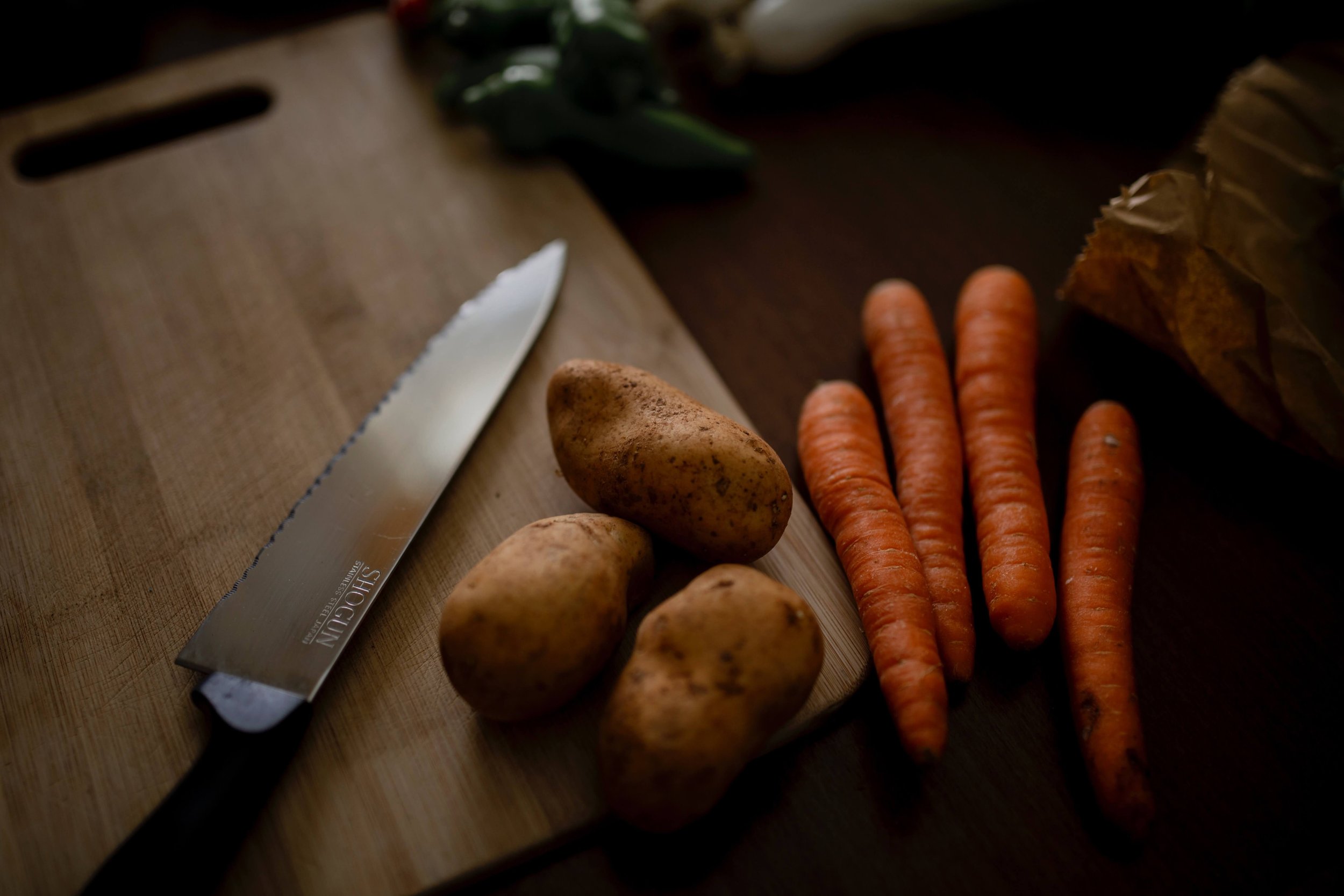A Dietitian's Guide to Potatoes
Potatoes are one of those essential cooking items that seem to make any dish better — from baked potatoes, to mashed potatoes, french fries, breakfast potatoes, pierogies, potato chips, potato salad, gnocchis, scalloped potatoes, potato skins, couch potatoes… you name it! The possibilities are endless. Safe to say that one thing’s for sure: if you want to nail a potato recipe, you need to find your perfect spud-match!
Let’s take a closer look at the contestants.
1. Starchy Potatoes
Russet, Idaho, Bake-King, Yams/Sweet Potatoes
Starchy varieties contain, as you might suspect, the most amount of starch than any other potato variety. These potatoes normally have an elongated shape and a rough surface to them. Because of their higher starch content, these potatoes are great for mashing, frying and baking as they tend to absorb more water and break apart more easily which as a result makes them smooth and fluffy.
Uses: Mashed , baked , fried, or made into pierogies, gnocchis, and chips.
2. Waxy Potatoes
Red Bliss, Red Creamer, Red Pontiac, White Rose, Chieftain, French Fingerling
Waxy varieties, on the other hand, have the least amount of starch, which allows them to hold their shape better after cooking. They tend to have a more rounded shape and their surface tends to be nice & smooth.
Waxy potatoes also hold less water, and have a tendency to have a firm and creamy flesh. This makes them ideal for making potato salads, casseroles and gratins.
Uses: In salad, in a casserole, or made into gratin.
3. All-Purpose Potatoes
Yukon Gold, Kennebec, Yellow Finn, Purple Peruvian, Red Gold, …
All-purpose varieties are the perfect mix of starchy and waxy potatoes. These potatoes contain an intermediate amount of starch, which makes them less floury, more moist and more firm than starchy potatoes.
They also fall apart much more easily than waxy potatoes. Their shape and skin texture vary depending on the type, but all-purpose potatoes are ideal for mashing, pan-frying, stewing, and roasting.
Uses: Mashed, stewed, pan-fried, and roasted.
Happy cooking!
Pour la version française, cliquez ici.
Source(s):




